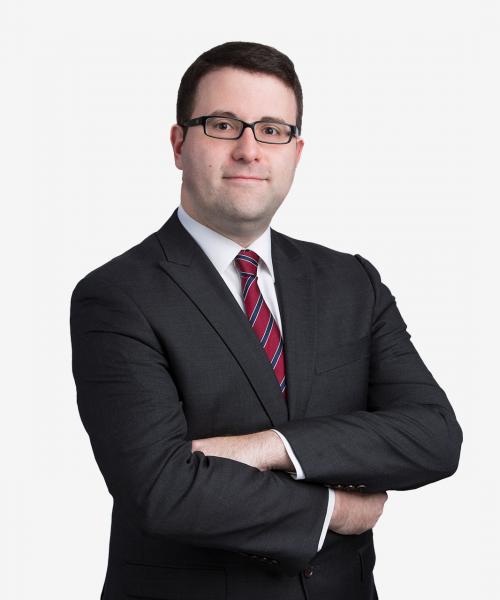Premarket Testing of Diagnostic Medical Software Protected From Claims of Patent Infringement by § 271 Safe Harbor Defense
On October 16, 2020, the US District Court for the Northern District of California granted a motion for summary judgment of non-infringement, rejecting the argument that the § 271 safe harbor does not apply to activities that have a commercial purpose. See Edwards Lifesciences Corp. v. Meril Life Sciences Pvt. Ltd., No. 19-CV-06593, ECF No. 98 (N.D. Cal. October 16, 2020). This safe harbor provision is often invoked by manufacturers of generic drugs. However, the Edwards decision serves as a reminder that medical device manufacturers are also eligible to raise this defense, in connection with the development of Class I, II, or III devices subject to FDA approval. It further confirms that otherwise-infringing activities with a commercial purpose may still be protected by the safe harbor, provided that they are reasonably related to regulatory approval of a medical device.
Section 271 of the Hatch-Waxman Act carves out an exemption to patent infringement liability when otherwise-infringing activities are “solely for uses reasonably related to the development and submission of information under a Federal law which regulates the manufacture, use, or sale of drugs or veterinary biological products” (e.g., for FDA approval). 35 U.SC. § 271(e)(1). This exemption allows competitors to begin the lengthy regulatory approval process while blocking patents that are still in force, expediting the possibility of market entry after any such patents expire. While the § 271 safe harbor is oven invoked by manufacturers of generic drugs, the Supreme Court has recognized that it also applies to FDA-regulated medical devices. See Eli Lilly & Co. v. Medtronic, Inc., 496 US 661 (1990). Parties often dispute whether otherwise-infringing activities are “reasonably related” to regulatory approval when the activities in question were driven at least in part by commercial interests. However, the Federal Circuit has confirmed that the “underlying purposes do not matter as long as [a defendant] prove[s] that the [the accused activity] was reasonably related to developing information for FDA submission.” Amgen Inc. v. Hospira, Inc., 944 F.3d 1327, 1339 (Fed. Cir. 2019) (emphasis added); see also Abtox, Inc. v. Exitron Corp., 122 F.3d 1019 (Fed. Cir. 1997).
Medical device manufacturers are required to obtain premarket approval from the FDA before marketing a device for clinical use within the U.S. The FDA categorizes medical devices in three classes based upon the perceived level of risk that they present, with each class being subject to a different level of regulation. See 21 U.S.C. § 360c(a)(1). Class I devices present the lowest risk, while Class III is reserved for the highest risk devices. See 21 U.S.C. § 360c(a)(1)(A)-(C). Class II devices are subject to approval under the § 510(k) “premarket notification” process. Under the § 510(k) process, if a Class II medical device is deemed to be substantially equivalent to a pre-existing medical device that has already been cleared by the FDA, it can be marketed without further regulatory analysis.
Turning to the present case, plaintiff, plaintiff Edwards Lifesciences Corp. (“Edwards”) is a supplier of medical devices for the treatment of heart disease (e.g., artificial heart valves). Among its best-known products is its SAPIEN® line of transcatheter prosthetic heart valves. Defendant Meril Life Sciences Pvt. Ltd. (“Meril”), is a global medical device company that markets the “Myval” branded transcatheter heart valve, which is designed to be used with a “Navigator” delivery system (collectively, the “Myval System”). In the United States, the Myval System is considered a “Class III” medical device subject to strict regulatory standards, because it is “for use in supporting or sustaining human life or for a use which is of substantial importance in preventing impairment of human health.” 21 U.S.C. § 360c(a)(1)(C).
The Myval System is used to treat severe symptomatic native aortic valve stenosis, a condition where the aortic valve narrows and restricts normal blood flow. In 2017, Meril commissioned pre-clinical investigations on cadavers at the University of Washington to determine the feasibility of implanting its Myval transcatheter heart valve into human subjects. In connection with this project, Meril shipped six samples of the Myval System to the university to conduct these pre-clinical investigations. This pre-clinical research was successful, allowing Meril to begin to plan clinical studies with human subjects. However, before conducting clinical studies in the U.S., Meril was required to obtain mandatory premarket approval from the FDA.
In late August 2019, Meril contacted the FDA to inquire about the preliminary requirements for filing a pre-submission. In parallel, Meril sought out potential clinical researchers by securing a booth at the 2019 Transcatheter Cardiovascular Therapeutics Conference in San Francisco (“TCT Conference”). Meril’s booth provided marketing materials for the Myval System, though it did not sell or offer to sell the Myval System, and these marketing materials indicated that the system had yet to receive FDA approval. A Meril employee brought samples of the Myval System to the TCT Conference in connection with a planned physical demonstration; however, these samples were not shown to any conference attendees due to technical issues that prevented the demonstration from proceeding.
Shortly thereafter, Plaintiff Edwards filed suit alleging that Meril had infringed Edwards’ patents under 35 U.S.C. §§ 271(a) and/or (g) by importing and displaying the Myval System in the U.S. In particular, Edwards asserted two acts of infringement: (1) Meril’s importation of the accused device into the U.S. for the University of Washington’s pre-clinical cadaver studies; and (2) Meril’s importation and display of at least one accused device at the TCT Conference. Under 35 U.S.C. 271(g), anyone who imports into the U.S., or sells or uses in the U.S., a product made by a patented process – regardless of where the process was performed or where the product was assembled – is liable for infringement. In support of its position, Edwards argued that the § 271 safe harbor did not apply to these infringing acts because Meril had a commercial purpose when it imported the Myval samples both times (i.e., to promote sales). Edwards further noted that Meril did not have an FDA application pending at the time of the TCT Conference. In response, Meril countered that: (1) Federal Circuit guidance is clear that the intended purpose is irrelevant to the safe harbor inquiry; and (2) even if it was relevant, Meril’s reason for importing samples into the U.S. was to support further clinical trials and to obtain premarket approval from the FDA.
The Court agreed with Meril, holding that both acts of importation were “reasonably related” to developing information Meril to submit to the FDA in order to obtain regulatory approval for the Myval System. The Court rejected Edwards’ argument regarding Meril’s alleged commercial intent, noting that “[Meril’s] intent or alternative uses are irrelevant to its qualification to invoke the section 271(e)(1) shield.” Edwards, No. 19-CV-06593, 2020 WL 6118533, at *10 (N.D. Cal. Oct. 16, 2020). As summarized by the Court:
[B]oth acts fall squarely within the safe harbor. Transportation of the Myval Samples to UW was an exempt act because it generated preclinical data to support Meril's clinical trials. Likewise, transportation of the Myval Samples to the TCT Conference (with no sales or offers for sale) was an exempt act because Meril is a sponsor responsible for selecting qualified investigators and providing them with the necessary information to conduct clinical testing.
Id. (internal citations and quotations omitted).
The Court similarly held that any non-sale demonstration of the Myval System which may have occurred at the TCT Conference was either a non-infringing act under 35 U.S.C. § 271(a) or exempt under the safe harbor, citing to guidance from the Federal Circuit. See, e.g., Chartex Intern. PLC v. M.D. Personal Products Corp., 5 F.3d 1505 (Fed. Cir. 1993). Accordingly, the Court found that a summary judgment of non-infringement was warranted.
As illustrated by this decision, medical device manufacturers should be aware of the expansive scope of the § 271 safe harbor as a potential defense to patent infringement. The fact that an accused activity may have incidental commercial benefits should not factor into the safe harbor analysis, provided that such activities are reasonably related to the development or submission of information to the FDA for approval of a medical device.
The Edwards decision was preceded by another recent decision from the Central District of California in which the plaintiff had also argued that the safe harbor should not apply, in this case, because testing of the accused diagnostic medical software was allegedly done for commercialization efforts rather than for FDA approval. In that case, the accused device was a Class II device with limited requirements for testing. However, the Court disagreed and dismissed the plaintiff’s patent infringement claims after applying a similar analysis (i.e., so long as an activity is reasonably related to obtaining FDA approval, the underlying purposes or attendant consequences of the activity are irrelevant).
Together, these decisions serve as a reminder that medical devices (e.g., implantable prosthetics and diagnostic software) are eligible for protection under the § 271(e)(1) safe harbor. They further confirm that (1) any alleged commercial motivation underlying accused activities and (2) the class of a medical device, are irrelevant to the determination as to whether this safe harbor applies. Medical device manufacturers would do well to remember that the development and/or testing of medical devices and diagnostic software – in connection with a planned request for FDA approval – may be shielded from claims of patent infringement by the § 271(e)(1) safe harbor.
Contacts
- Related Industries
- Related Practices

